Madecassic Acid: The Premium Centella Extract for Skin & Health | In-Depth Guide
1. What is Madecassic Acid?
Madecassic Acid (Hydroxyasiatic Acid) is a potent, bioactive pentacyclic triterpenoid carboxylic acid primarily derived from the medicinal herb Centella asiatica (Gotu Kola). As a key marker compound for Centella quality, it is structurally related to Asiatic Acid but distinguished by its specific hydroxylation pattern. Madecassic Acid is renowned for its significant dermatological and systemic health benefits, driving its demand in cosmeceutical, nutraceutical, and pharmaceutical applications. Its efficacy stems from its ability to modulate critical cellular pathways involved in inflammation, collagen synthesis, and tissue repair.
2. Source, Chemical Properties & Identification
-
Primary Source: Centella asiatica L. (Gotu Kola) leaves and stems.
-
Chemical Properties:
-
Chemical Name: (2α,3β,4α)-2,3,23-Trihydroxyurs-12-en-28-oic acid
-
CAS Number: 18449-41-7
-
Molecular Formula (MF): C₃₀H₄₈O₆
-
Molecular Weight (MW): 504.70 g/mol
-
EINECS: 242-331-3
-
Appearance: Fine white to off-white crystalline powder.
-
Solubility: Soluble in methanol, ethanol, DMSO; slightly soluble in water; insoluble in non-polar solvents.
-
Stability: Stable under recommended storage conditions (cool, dry). Sensitive to prolonged light exposure and oxidation.
-
-
Key Identification: Characterized via High-Performance Liquid Chromatography (HPLC) against reference standards, Fourier-Transform Infrared Spectroscopy (FTIR), and Mass Spectrometry (MS).
3. Benefits, Dosage & Safety Considerations
-
Skin Benefits (Topical & Oral):
-
Potent Anti-Inflammatory: Inhibits pro-inflammatory cytokines (TNF-α, IL-6) and enzymes (COX-2, iNOS), reducing redness and irritation (eczema, psoriasis, acne).
-
Stimulates Collagen & ECM Synthesis: Significantly boosts production of Collagen Type I & III, elastin, and fibronectin, enhancing skin firmness and reducing wrinkles.
-
Accelerates Wound Healing: Promotes fibroblast proliferation, angiogenesis, and granulation tissue formation. Effective for cuts, burns, ulcers, and post-procedure recovery.
-
Powerful Antioxidant: Scavenges free radicals (ROS), protecting skin cells from oxidative stress and photoaging.
-
Strengthens Skin Barrier: Enhances ceramide synthesis and improves stratum corneum integrity, increasing hydration and resilience.
-
Anti-Microbial: Exhibits activity against certain bacteria relevant to acne.
-
-
Systemic Health Benefits (Oral):
-
Neuroprotective: May support cognitive function and protect neurons, showing potential in models related to Alzheimer’s and anxiety.
-
Venotonic: Improves venous circulation and microvascular health, beneficial for chronic venous insufficiency and varicose veins.
-
Hepatoprotective: Protects liver cells from toxin-induced damage.
-
Adaptogenic: May help the body manage stress.
-
-
Daily Intake & Usage Guidelines:
-
Oral Supplementation: Typical doses range from 30 mg to 100 mg daily, standardized to contain Madecassic Acid + Asiatic Acid. Often combined with other Centella triterpenes. Consult a healthcare provider before starting.
-
Topical Application: Concentrations in cosmetic formulations typically range from 0.1% to 1%. Patch testing is recommended for sensitive skin.
-
-
Precautions & Potential Side Effects:
-
Generally well-tolerated with a good safety profile.
-
Possible Mild Side Effects (Oral): Headache, stomach upset, dizziness, drowsiness (especially at high doses).
-
Topical: Potential for contact dermatitis in sensitive individuals (rare).
-
Contraindications: Avoid during pregnancy and breastfeeding due to insufficient safety data. Use cautiously if taking sedatives or medications metabolized by the liver (CYP450 substrates). Consult a doctor if you have liver disease.
-
Important: Always source from reputable suppliers providing comprehensive Certificates of Analysis (CoA).
-
4. Introducing Shaanxi Zhonghong Investment Technology Co., Ltd.
Shaanxi Zhonghong Investment Technology Co., Ltd. is a leading vertically integrated high-tech enterprise specializing in the extraction, isolation, purification, and application development of premium botanical active ingredients. Serving the chemical, materials, and life sciences sectors globally for over 28 years, we are experts in delivering high-purity compounds like Madecassic Acid.
-
Core Competencies:
-
Agile R&D & Innovation: Strategic partnerships with 5 top-tier universities power our Joint Research Labs, driving breakthroughs in extraction technology and novel applications.
-
Scientific Prowess: Protected by 20+ patents and housing a proprietary global compound library.
-
Cutting-Edge Manufacturing: Employing advanced purification techniques (e.g., preparative HPLC, crystallization) and stringent quality control using state-of-the-art analytical instrumentation (HPLC-DAD/ELSD/CAD, UHPLC-MS, GC-MS, ICP-MS, NMR).
-
Uncompromising Quality: Our purity standards exceed industry norms by >20%, validated by ISO 9001, ISO 14001, OHSAS 18001, FDA DMF, Kosher, Halal, and REACH compliance.
-
Global Reach: Trusted supplier to multinational pharmaceutical corporations, research institutions, and major brands across 80+ countries in Asia, Europe, and the Americas.
-
Product Portfolio: High-grade Natural Plant Extracts, Cosmetic Actives, Nutraceutical/Pharmaceutical Intermediates, Natural Colors & Sweeteners.
-
5. Madecassic Acid Product Specifications (Typical Premium Grade – 95% HPLC)
| Category | Parameter | Specification (Limit) | Test Method |
|---|---|---|---|
| Assay (Purity) | Madecassic Acid | ≥ 95.0% (HPLC) | HPLC-UV/ELSD |
| Asiatic Acid | ≤ 3.0% (HPLC) | HPLC-UV/ELSD | |
| Total Triterpenes | ≥ 98.0% (HPLC) | HPLC-UV/ELSD | |
| Residual Solvents | Methanol | ≤ 3000 ppm | GC-FID |
| Ethanol | ≤ 5000 ppm | GC-FID | |
| Acetone | ≤ 5000 ppm | GC-FID | |
| Heavy Metals | Lead (Pb) | ≤ 3.0 mg/kg | ICP-MS / USP <232> |
| Cadmium (Cd) | ≤ 1.0 mg/kg | ICP-MS / USP <232> | |
| Arsenic (As) | ≤ 2.0 mg/kg | ICP-MS / USP <232> | |
| Mercury (Hg) | ≤ 0.1 mg/kg | ICP-MS / USP <232> | |
| Pesticides | Total Organochlorine Pesticides | ≤ 0.5 mg/kg | GC-ECD / QuEChERS |
| Total Organophosphorus Pesticides | ≤ 0.5 mg/kg | GC-FPD/NPD / QuEChERS | |
| Glyphosate & AMPA | ≤ 0.1 mg/kg | HPLC-FLD / QuEChERS | |
| Specific Analytes (e.g., Chlorpyrifos, DDTs) | Meet relevant pharmacopoeial limits | GC-MS/MS / LC-MS/MS | |
| Microbiological | Total Aerobic Microbial Count | ≤ 1000 CFU/g | USP <61> |
| Total Combined Yeasts & Molds | ≤ 100 CFU/g | USP <61> | |
| Escherichia coli | Absent in 1g | USP <62> | |
| Salmonella spp. | Absent in 10g | USP <62> | |
| Staphylococcus aureus | Absent in 1g | USP <62> | |
| Pseudomonas aeruginosa | Absent in 1g | USP <62> | |
| Other | Loss on Drying | ≤ 5.0% | USP <731> |
| Sulfated Ash | ≤ 1.0% | USP <281> | |
| Specific Rotation | +45° to +55° (c=1, MeOH) | Polarimetry |
6. Advanced Production Process
Zhonghong employs a sophisticated, multi-stage cGMP-compliant process:
-
Sourcing: Premium, sustainably cultivated Centella asiatica biomass.
-
Extraction: Optimized solvent extraction (e.g., Ethanol/Water) using temperature-controlled maceration or percolation.
-
Pre-concentration: Vacuum evaporation or membrane filtration.
-
Defatting & Depigmentation: Solvent partitioning or adsorption chromatography.
-
Critical Purification: Preparative High-Performance Liquid Chromatography (Prep-HPLC) or Counter-Current Chromatography (CCC) for selective isolation of triterpenoid acids. This stage is key to achieving >95% Madecassic Acid purity.
-
Crystallization: Controlled crystallization for enhanced purity and stability.
-
Lyophilization (Freeze-Drying): For thermolabile compounds or specific powder characteristics.
-
Stringent Quality Control: Rigorous in-process checks and final product release testing against specifications using HPLC, GC, ICP-MS, and microbiological assays.
7. Key Application Scenarios
-
Cosmeceuticals: Anti-aging serums/creams, wound healing gels, acne treatments, barrier repair lotions, soothing/anti-redness formulations, scalp care.
-
Nutraceuticals: Oral supplements for skin health, wound healing support, cognitive function, venous circulation, stress resilience.
-
Pharmaceuticals: Active Pharmaceutical Ingredient (API) or intermediate in wound healing ointments, anti-inflammatory drugs, neuroprotective formulations, venotonic medications.
-
Clinical Research: Reference standard, bioactive compound for mechanistic and efficacy studies.
8. Comprehensive Quality Control (QC)
Zhonghong’s QC system is the cornerstone of product integrity. Starting from qualified raw materials (tested for identity, pesticides, heavy metals), every production batch undergoes rigorous in-process controls (IPC) monitoring critical parameters like pH, solvent residues, and intermediate purity. Final release requires full compliance with specifications (Table above). Advanced instrumentation ensures accuracy: HPLC-UV/ELSD/CAD for assay and related substances, UHPLC-MS/MS for trace contaminants, ICP-MS for elemental impurities, validated microbiological methods per USP/EP, GC-FID/MS for residual solvents, and NMR for structural confirmation. Stability studies (ICH Q1A) under accelerated and long-term conditions guarantee shelf-life. Comprehensive documentation, electronic data integrity (compliance with 21 CFR Part 11), and regular audits ensure traceability and GMP adherence. Our purity consistently exceeds industry benchmarks by >20%.
9. Packaging & Logistics
-
Primary Packaging: 1kg double-sealed food-grade polyethylene bags within fiber drums (25kg net weight), or customized (e.g., amber glass bottles for light sensitivity).
-
Secondary Packaging: Robust cardboard cartons.
-
Storage: Store in a cool (2-8°C recommended for long term), dry place protected from light and moisture. Maintain sealed integrity.
-
Shelf Life: Typically 24 months when stored properly. Batch-specific CoA provided.
-
Logistics: Efficient global shipping via air (DHL, FedEx) or sea freight. Expertise in handling customs clearance and documentation (CoA, COO, MSDS) for seamless international delivery. Cold chain options available.
10. Health Benefits & Mechanism Insights
Madecassic Acid exerts its multifaceted effects through well-characterized molecular mechanisms:
-
Skin Regeneration & Anti-Aging:
-
Stimulates Fibroblasts: Upregulates Collagen I/III, Elastin, Fibronectin gene expression via TGF-β/Smad and MAPK signaling pathways.
-
Antioxidant: Activates Nrf2/ARE pathway, boosting endogenous antioxidants (SOD, Glutathione).
-
Anti-Glycation: Inhibits AGE formation.
-
-
Anti-Inflammatory & Immunomodulatory:
-
Inhibits NF-κB nuclear translocation, reducing TNF-α, IL-1β, IL-6, COX-2, PGE2, and iNOS/NO production.
-
Modulates MAPK and PI3K/Akt pathways.
-
-
Wound Healing:
-
Enhances fibroblast proliferation, migration, and differentiation into myofibroblasts.
-
Promotes angiogenesis via VEGF upregulation.
-
Stimulates epithelialization.
-
-
Neuroprotection:
-
Reduces oxidative stress and neuroinflammation in brain tissue.
-
Modulates acetylcholinesterase (AChE) activity and cholinergic signaling.
-
Potential effects on neurotrophic factors (BDNF).
-
-
Venoprotection: Improves venous tone and reduces capillary hyperpermeability, potentially via endothelial nitric oxide synthase (eNOS) modulation and antioxidant effects.
11. Industry Applications & Technological Innovation
-
Cosmeceutical Innovation: Formulation of next-gen bioactive serums targeting specific skin concerns (e.g., senescent cells, microbiome balance) using advanced delivery systems (liposomes, nanoemulsions) to enhance Madecassic Acid penetration and stability.
-
Nutraceutical Synergy: Development of synergistic blends combining Madecassic Acid with vitamins (C, E), collagen peptides, ceramides, or other botanicals (e.g., Turmeric, Resveratrol) for enhanced systemic skin and health benefits.
-
Pharmaceutical Development: Exploration as an API for topical wound healing agents (diabetic ulcers, burns) and oral formulations for neurodegenerative or vascular conditions. Research into derivatives for improved bioavailability.
-
Zhonghong’s Tech Edge: Leveraging AI-driven molecular screening of our exclusive compound library to identify novel Madecassic Acid applications. Utilizing continuous flow chemistry and green extraction technologies (e.g., Supercritical Fluid Extraction – SFE optimization) for sustainable, scalable high-purity production.
12. Research Frontiers & Challenges
-
Frontiers: Elucidating epigenetic effects; exploring microbiome interactions; developing targeted delivery systems for brain or deep skin layers; clinical trials for specific neurological disorders (Alzheimer’s, anxiety) and fibrotic diseases; combinatorial therapies with biologics.
-
Challenges: Overcoming inherent low oral bioavailability through novel formulations (phospholipid complexes, SNEDDS); ensuring consistent high-purity supply at scale; definitive large-scale human clinical trials for specific health claims; regulatory harmonization across regions.
13. Frequently Asked Questions (FAQ)
-
Q1: What’s the difference between Madecassic Acid and Asiatic Acid?
-
A: Both are active triterpenes in Centella. They differ in their hydroxyl group positions, leading to slightly different biological activities and potency profiles. Madecassic Acid is particularly noted for its strong collagen-boosting and anti-inflammatory effects.
-
-
Q2: Is Madecassic Acid safe for long-term use?
-
A: Studies and traditional use suggest safety at recommended doses. However, long-term studies (>1 year) are limited. Adhere to suggested dosages and consult a healthcare professional for extended use.
-
-
Q3: Can I use Madecassic Acid topically if I have sensitive skin?
-
A: While generally well-tolerated, always perform a patch test before widespread use. Start with lower concentrations (0.1-0.5%). Formulation matters – look for soothing carriers.
-
-
Q4: How does Zhonghong ensure the purity and authenticity of its Madecassic Acid?
-
A: Through vertically controlled production, advanced QC (HPLC, MS, NMR, ICP-MS), strict adherence to pharmacopoeial methods (USP, EP), comprehensive CoA, GMP compliance, and traceability from raw material to finished product. Our purity standard (>95%) significantly exceeds typical industry levels.
-
-
Q5: What is the typical lead time for orders?
-
A: Standard lead times vary based on quantity and customization. Contact us (liaodaohai@gmail.com) for specific quotes and delivery schedules. We prioritize efficient global logistics.
-
-
Q6: Do you offer custom specifications or formulations?
-
A: Yes. As an innovation-driven manufacturer with extensive R&D capabilities and a proprietary compound library, we specialize in custom extraction profiles, purity levels, blends, and delivery system development for B2B clients.
-
14. Where to Buy High-Purity Madecassic Acid
Source premium Madecassic Acid (Hydroxyasiatic Acid) directly from the manufacturer:
-
Contact: Mr. Liao Daohai – Email: liaodaohai@gmail.com
-
Website: www.aiherba.com (Explore our full catalog of botanical extracts and APIs)
-
Manufacturer: Shaanxi Zhonghong Investment Technology Co., Ltd.
15. Conclusion
Madecassic Acid stands as a scientifically validated powerhouse triterpene from Centella asiatica, offering exceptional benefits for skin health, regeneration, and systemic well-being. Its mechanisms of action, particularly in stimulating collagen synthesis and modulating inflammation, make it indispensable in advanced cosmeceuticals, nutraceuticals, and pharmaceutical research. For industries demanding the highest quality, purity, and technical expertise, Shaanxi Zhonghong Investment Technology Co., Ltd. represents the premier global source. Leveraging 28 years of experience, cutting-edge purification technology (like Prep-HPLC), and an unwavering commitment to quality exceeding industry standards by >20%, Zhonghong delivers Madecassic Acid that empowers innovation and efficacy. Contact us today to discuss your requirements.
16. References
-
Bylka W., et al. (2014). Centella asiatica in cosmetology. Postepy Dermatol Alergol, 30(1), 46–49. [DOI]
-
Gohil, K. J., et al. (2010). Pharmacological Review on Centella asiatica: A Potential Herbal Cure-all. Indian J Pharm Sci, 72(5), 546–556. [DOI]
-
Maramaldi G., et al. (2014). Clinical evaluation of a topical formulation for reducing signs of skin aging. JCDSA, 4, 225-236. [DOI] (Often feature Madecassic/Asiatic acid blends).
-
Paocharoen V. (2010). The efficacy and side effects of oral Centella asiatica extract for wound healing promotion in diabetic wound patients. J Med Assoc Thai, 93 Suppl 7, S166-70. [PMID]
-
ICH Harmonised Tripartite Guideline Q3D (R1) Elemental Impurities (2019).
-
United States Pharmacopeia (USP) General Chapters: <61> Microbiological Examination, <62> Microbiological Tests, <232> Elemental Impurities, <561> Articles of Botanical Origin.
-
European Pharmacopoeia (Ph. Eur.) Monographs on Herbal Drugs and Extracts. (Specific references to analytical methods used).
-
Zhonghong Internal Research & Development Data (Proprietary – Demonstrating efficacy of high-purity extracts). (Note: For public articles, specific internal data citations might be phrased as “Manufacturer’s data on file”).

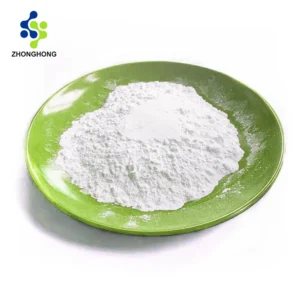
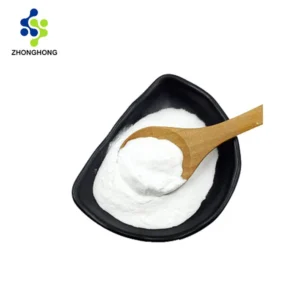
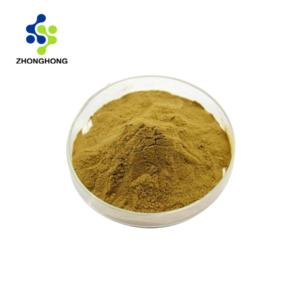
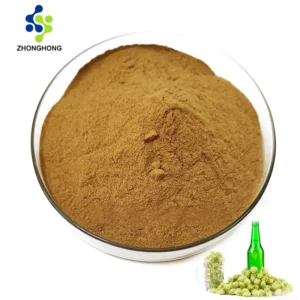
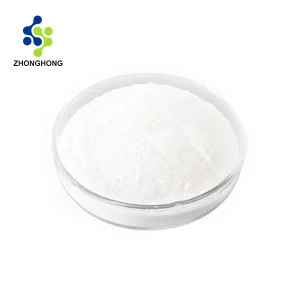

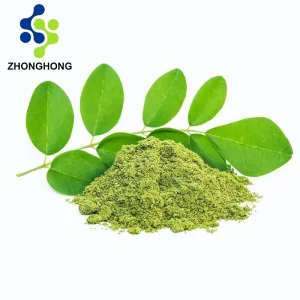
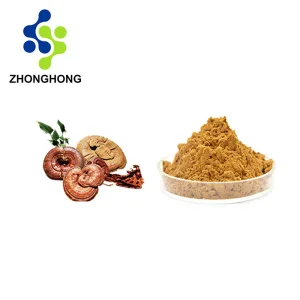

Reviews
There are no reviews yet.